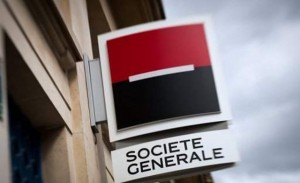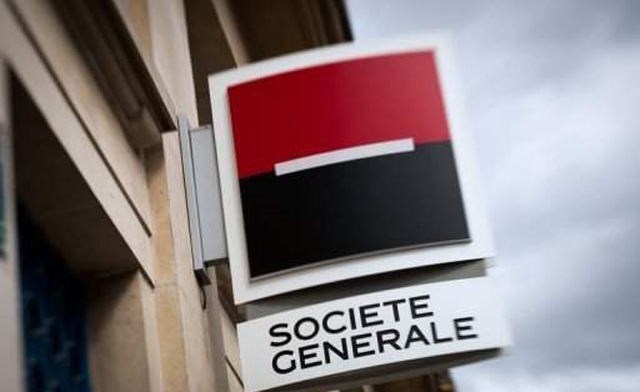
(AFP Photo)
According to Business News, large banks operating within Egypt have been ranked the most efficient; however similar statistics regarding which banks have achieved the fastest growth were not mentioned, with the exception of Banque Misr and the Misr Iran Development Bank. While Banque Misr was ranked the least efficient of Egypt’s banks, it also reported the fastest rates of growth. The Misr Iran Development Bank on the other hand, a bank possessing small asset levels, ranked last in terms of growth, but fourth in terms of efficiency.
The National Bank of Egypt (NBE), which carries more assets than any other bank in the country, placed average in both categories.
The Commercial International Bank (CIB) was ranked the most efficient as a result of its strong basic indicators, particularly in terms of returns on shareholder equity, which was totalled 25.9%, one of the highest rates reported in the market, in addition to returns on average assets, which totalled 2.48%, the second highest in Egypt’s market. The bank also saw a decrease in its rate of non-performing loans, which made up 3.9% of its total loans.
NSGB, which acquired new ownership at the beginning of this year, placed second in terms of efficiency, due to its 70% run rate on loans for high deposits, in addition to its asset return rate which increased 2.3%, and decreases in its non-performing debt rate.
The difference between the two banks listed was reported as being four points.
HSBC was ranked third in terms of efficiency, despite the fact that it was reported as doing better than both CIB and NSGB in all of its basic indicators. The bank’s return on average assets reached 2.7%, while those for property rights reached 32.2%, while the bank’s average interest margins were reported as among the best in the Egyptian market.
However, the bank refused to release information regarding its non-performing loans, a fact which caused it to place third.
The Misr Iran Development Bank placed fourth in terms of efficiency, beating out the Bank of Alexandria
which placed fifth, while Credit Agricole and the Al-Watany Bank of Egypt placed sixth and seventh respectively.
The Abu Dhabi Islamic Bank placed last in terms of most efficient banks, partially a result of the bank’s large portfolio of non-performing loans, which made up 43% of the bank’s total loans, in addition to reporting no returns on assets or property rights. The bank’s operating costs were reported as reaching 137.5% of earnings, a failing which also caused the Suez Canal Bank to occupy the second to last position on the list. 53% of the Suez Canal Bank’s loans were reported as non-performing, with its operating costs reported as on average being 56.4% higher than all other banks.
According to Business News’ indicators, the Egyptian Gulf Bank reported the fastest growth, benefitting from an increase in assets, which grew last year at a rate of 29.5%, in addition to a 38% increase in net returns, and 167.9% increase in net profits. This came despite a slight decrease in its lending rate. The Faisal Islamic Bank of Egypt was reported as placing second in terms of growth, largely due to its 195.6% increase in net profits, also second in the market in this category following Barclays. The bank’s assets also grew 17%, with earnings from returns rising 48.3%, in addition to those from earnings and commission increasing 46.7%.
Banque Misr was the only large bank ranking high in terms of high growth indicators, placing fourth. The bank placed first in terms of increases in earnings based off returns, reported as rising 86%, while net earning returns and commission rose by 65%. Bank profits also increased 37.5%.
The United National Bank placed third in terms of highest growth, benefitting from a 20% increase in assets, in addition to an 86.9% increase in its net profits, and 26.3% increase in its primary lending rate.
The Ahli United Bank, which was ranked as the fastest growing bank last year, placed fifth in 2012, with a 38.3% increase in net returns being the bank’s strongest indicator.
The Misr Iran Development Bank placed last in terms of growth for 2012, due to a 5% decrease in its total assets, with net earnings from returns also decreasing 0.8% compared to the previous year.
BNP Paribas, which plans on changing its name in the coming months, ranked second to last in terms of growth, and reported low asset growth, in addition to a 6% decrease in lending over the past year.
The report shows that seven of the 25 banks listed witnessed a decrease in lending activity.
However despite this, these banks did not report an overall decrease in profits, due to increases in investment in government debt securities, whose returns rose significantly compared to the previous year. Barclays reported profit increases last year of 301%.
The Arab Banking Corporation (ABC) Egypt saw the highest increase in its rate of lending, increasing 50% compared to the previous year, partially a result of the bank’s new policy to build a strong loans portfolio.
Translated from AlBorsa News




